What Makes Photoshop So Expensive?
Why does the upcoming Adobe Photoshop CS5 cost $600? We tested out its features to find out what you’re paying for.
Create 3D Images and Scenes
The extended version of Photoshop CS5 includes 3D tools with which you can turn 2D images into 3D objects, manipulate their shape and position, apply textures, add lights, and render out a high-quality, color-managed image. However, the feature requires a fairly powerful graphics card to work. The Nvidia GeForce 8400M GS in our test laptop didn’t qualify and even with the ATI Radeon HD 4600 in our test desktop rendering wasn’t fast. Adobe also suggests working in 64-bit on a PC or Mac. Photoshop falls back to software-only rendering but this wasn’t always successful with the beta software.
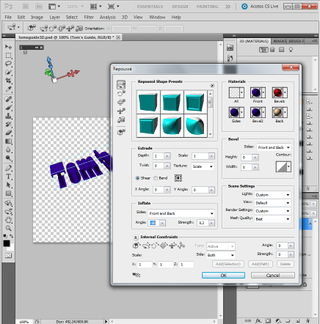
For simple 3D, you can take text and vector objects (for the best results they need to be on their own layer) and use the Repoussé effect to extrude them into 3D. This gives you a significant range of controls such as being able to change from a simple 3D version to dragging the object through 3D space, bending it in the middle, or twisting it around itself, applying textures to every surface independently, and controlling lighting effects.
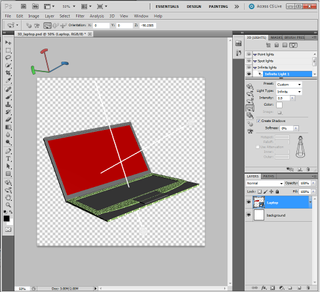
Photoshop Extended will make some common 3D shapes, so you can wrap a photo around a wine bottle as a label. If you have a proper 3D model with which to work that you have built up in layers, you can style every element, choose the texture and the color of the texture, set the lights, and control the reflections. Applying photos as textures means you can get a 3D look with realistic images and you can use a photograph to mimic the lighting of a real scene–impressively, it works for HDR images. For speed, you can work with a basic level of rendering and switch to the final, high-quality version when you’re done.
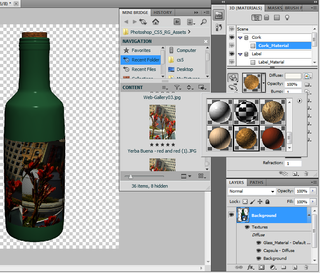
Once you get beyond Repoussé and making standard shapes, you need to learn how to use the 3D features in Photoshop. This is where the features are definitely aimed at professional designers who need powerful control rather than simplicity.
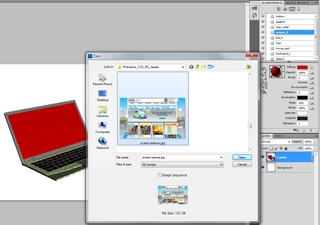
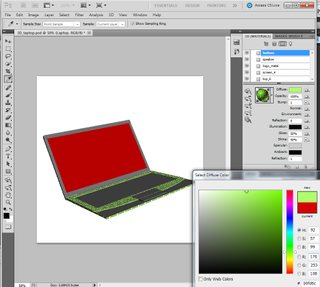
Sign up to get the BEST of Tom's Guide direct to your inbox.
Get instant access to breaking news, the hottest reviews, great deals and helpful tips.
Current page: Photoshop CS5 3D Features - How They Work - Tom’s Guide
Prev Page Photoshop CS5 Lens Correction - How It Works - Tom’s Guide Next Page Is Photoshop CS5 Worth It? - For Professionals, Yes - Tom’s GuideMary Branscombe is an experienced freelance journalist, editor and author, who has been writing for more than three decades. Her work has appeared in The Financial Times, The Guardian, Tom's Guide, and many more. She has also written several novels — including the Cassidy At Large technomysteries — and two IT guides alongside her writing partner, Simon Bisson.
-
mitch074 Nice. Photoshop sure is quite the package.Reply
However, I wonder why, along with all the tools you cite, there is no mention made of the Gimp...? After all, it is available on Windows, Mac and Linux, it doesn't cost a dime, and it also includes:
- HDR effects (in script-fu): Tone Mapping and Exposure Blend
- painting effects (programmable brushes)
- GEGL (yes, 3D in Gimp)
- lens correction
Now, all of these aren't as advanced nor are they as easy to use as the Photoshop versions, but they are here and they work. For free. -
marybranscombe Mitch - to fit in as much information about Photoshop CS5, I only had room to mention a tiny fraction of all the image editing tools out there ;) I'm quite a fan of Paint.Net and Irfanview, personally...Reply -
mitch074 Paint.NET, iPhoto, WL Photo Gallery are not exactly professional-grade applications - while the Gimp (with colour profile management capabilities, layers-based approach, programmable filters, vector graphics capabilities, advanced stylus management, etc.) is, actually, used by some professionals... And a direct competitor to Photoshop.Reply
Thus why I found its absence (Paint.NET isn't quite there yet, it does have the merit of being free for use -but not open source- ) a bit surprising. -
Traciatim "Digital SLRs let you save files not just as JPEGs but in a RAW . . . "Reply
So does my point and shoot from 2002 . . . and (I believe all new) Interchangeable Lens Digital Cameras, and lots of point and shoots available today. You could have just said "Many Digital Cameras" rather than implying that Digital SLRs do something that other cameras don't, which is not true. -
marybranscombe Traciatim - true, but 1) the CS5 emphasis is very much on the DSLRs judging by the minimal list of cameras covered by the cusotm lens correction (and Adobe refers to only 275 cameras whose RAW formats are supported) and 2) my feeling is usually that point and shoot cameras with small lenses and sensors tend to need the in-camera processing to deliver good imagesReply -
cadder Photoshop is the ultimate consumer image editing tool. There are lesser tools sold by Adobe that will do for most people with digital cameras, and they are a lot less expensive- Photoshop Elements and Photoshop Lightroom. Of course Gimp and Irfanview are much cheaper options than that for the average person too.Reply -
anthropophaginian If it was for sale for half-price $300, I doubt sales would double. The same universities and design companies would buy it, but it would still be out of many consumers' price range. At this price range, with spreading of costs the time saved and final quality of the product will justify the price.Reply
...Also you're paying for the ostentatious value. -
punditguy Student discount FTW! Adobe Creative Suite Design Standard, $299 at Amazon. Won't be available until June 30, though...Reply -
Tomsguiderachel Traciatim"Digital SLRs let you save files not just as JPEGs but in a RAW . . . " So does my point and shoot from 2002 . . . and (I believe all new) Interchangeable Lens Digital Cameras, and lots of point and shoots available today. You could have just said "Many Digital Cameras" rather than implying that Digital SLRs do something that other cameras don't, which is not true.I would argue that most point and shoots today do not offer RAW. And, most interchangeable lens cameras ARE DSLRs (not all).Reply
